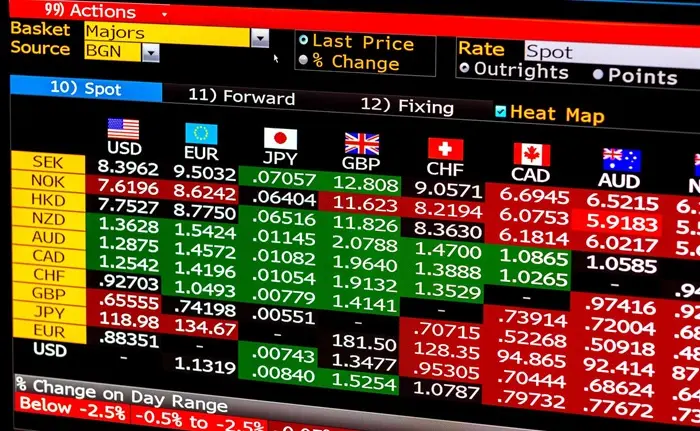A Tax-Free Savings Account (TFSA) is one of the most effective tools for building wealth in Canada. The TFSA allows individuals to earn investment income, including capital gains, dividends, and interest, without being taxed. This makes it an ideal vehicle for long-term investors, particularly those looking to invest in stocks. In this article, we will explore how to invest in stocks using your TFSA, the benefits of doing so, and the strategies to maximize your returns.
What is a TFSA?
A TFSA is a government-sponsored savings account that allows Canadian residents to earn tax-free income. Introduced in 2009, it is designed to encourage saving and investing by offering tax advantages.
TFSA Contribution Limits
Every year, Canadians can contribute a certain amount to their TFSA, with the contribution room carrying over from year to year if unused. For 2025, the annual contribution limit is set at $6,500, but this amount can change based on inflation adjustments. The total contribution room accumulates each year, so if you haven’t contributed in past years, your available room can be much higher.
TFSA and Investment Income
Unlike a regular savings account, the interest or capital gains earned in a TFSA are not subject to taxes. This means that whether you are earning dividends, interest, or selling stocks for a profit, you won’t owe any taxes on that income. This is especially beneficial for individuals looking to grow their investments over time without the burden of taxes eating into their returns.
Why Invest in Stocks with Your TFSA?
Investing in stocks within your TFSA offers several key benefits:
1. Tax-Free Growth
Stocks, especially over the long term, tend to grow faster than other investment types, such as bonds or savings accounts. With your TFSA, any gains from stock investments—whether from price appreciation or dividends—are not subject to tax, allowing you to keep all your returns.
2. Flexibility
Your TFSA allows you to invest in a wide range of assets, including individual stocks, exchange-traded funds (ETFs), and mutual funds. This gives you the flexibility to diversify your portfolio, manage risk, and target the best-performing sectors.
3. Withdrawals are Tax-Free
One of the key features of the TFSA is that you can withdraw funds at any time without incurring any tax penalties. This is different from an RRSP (Registered Retirement Savings Plan), where withdrawals are taxed as income. If you need access to the funds you’ve invested in stocks, you can take them out without worrying about taxes.
4. No Impact on Government Benefits
Unlike income from other investment vehicles, such as RRSPs, the income generated from your TFSA does not count toward your total taxable income. This means it won’t affect your eligibility for government benefits like the Canada Child Benefit (CCB) or Old Age Security (OAS).
Getting Started with TFSA Stock Investing
Investing in stocks using your TFSA is straightforward but requires a strategic approach. Below are the steps to begin.
1. Open a TFSA Account
To invest in stocks, you first need to open a TFSA. This can be done through various financial institutions, including banks, credit unions, and online brokers. Most banks and brokerages offer TFSA accounts, but each has different fees and investment options. When choosing a TFSA provider, consider the following:
Fees: Some providers charge account maintenance fees or commissions on trades. Look for low-cost alternatives to maximize your returns.
Investment Options: Not all TFSAs offer access to stocks. Some are limited to savings accounts, GICs, or mutual funds. Choose a provider that allows you to invest in stocks or ETFs.
User Interface: If you plan to manage your investments actively, choose a platform with an easy-to-use interface and research tools.
2. Deposit Funds into Your TFSA
Once your TFSA account is open, you’ll need to deposit funds. The amount you can contribute is subject to the annual limit, which, for 2025, is $6,500. If you have unused contribution room from previous years, you can deposit more. Ensure that you do not exceed your contribution limit to avoid penalties.
3. Choose Stocks to Invest In
The next step is selecting stocks to invest in. It’s crucial to diversify your portfolio to reduce risk and increase potential returns. Here are some tips for choosing stocks:
a. Individual Stocks
Blue-Chip Stocks: These are shares of large, well-established companies with a history of stability and strong performance. They tend to pay regular dividends and are less volatile than smaller stocks. Examples include major banks like the Royal Bank of Canada (RBC) or technology companies like Shopify.
Growth Stocks: These are shares of companies expected to grow faster than the overall market. They often reinvest profits back into the business rather than paying dividends. These stocks can provide substantial returns but come with higher risk.
Dividend Stocks: Dividend-paying stocks are particularly attractive in a TFSA because dividends are tax-free. These stocks offer a steady income stream and are generally considered less risky than growth stocks. Popular dividend stocks include utility companies or telecoms.
b. ETFs (Exchange-Traded Funds)
For those who want to invest in a broad range of stocks without picking individual companies, ETFs are an excellent option. These funds hold shares in many companies across various sectors, offering built-in diversification. For instance, an ETF tracking the S&P 500 index provides exposure to 500 large U.S. companies.
4. Develop a Diversified Portfolio
When investing in stocks within a TFSA, it’s important to build a diversified portfolio. A diversified portfolio reduces the impact of any one stock’s poor performance on your overall returns. Consider diversifying across:
Sectors: Invest in different sectors such as technology, healthcare, energy, and consumer goods.
Geographies: While Canadian stocks are a great option, consider adding U.S. and international stocks to take advantage of global growth opportunities.
Asset Types: Along with stocks, you might want to consider ETFs and bonds to balance risk and reward.
5. Monitor Your Investments
Once you’ve made your investments, it’s important to monitor your portfolio regularly. Keep track of stock performance, dividends, and any changes in the companies or sectors in which you’ve invested. While you don’t need to make changes constantly, regular check-ups will help you stay on track with your goals.
Strategies for Maximizing Your TFSA Investment Returns
To maximize your returns from investing in stocks within your TFSA, consider these strategies:
1. Focus on Long-Term Growth
TFSAs are ideal for long-term investing, and stocks, in particular, tend to perform better over extended periods. A long-term approach allows your investments to compound over time and reduces the impact of short-term market fluctuations.
2. Reinvest Dividends
Dividends earned from stocks within your TFSA are tax-free. Consider reinvesting these dividends to purchase additional shares of stock. Reinvesting dividends can significantly boost your returns over the long run.
3. Use Dollar-Cost Averaging (DCA)
Dollar-cost averaging is a strategy where you invest a fixed amount of money into a particular stock or ETF on a regular schedule (e.g., monthly). This method helps reduce the impact of market volatility by buying more shares when prices are low and fewer shares when prices are high.
4. Avoid Over-Concentration
While it can be tempting to put all your money into a few high-performing stocks, diversification is key to managing risk. Avoid over-concentrating your investments in one stock or sector to protect your portfolio from market downturns.
5. Rebalance Periodically
Over time, some stocks in your portfolio may outperform others, causing your asset allocation to shift. It’s important to periodically rebalance your portfolio to maintain your desired allocation.
Risks and Considerations
While investing in stocks within a TFSA can offer significant rewards, there are some risks and considerations to keep in mind:
1. Market Risk
Stock prices fluctuate based on various factors, including economic conditions, interest rates, and company performance. It’s important to remember that the value of your TFSA can go down as well as up.
2. Contribution Limits
Exceeding the contribution limit for your TFSA can result in penalties. Be sure to keep track of your contributions and withdrawals to avoid over-contributing.
3. No Tax Deduction
Unlike an RRSP, you don’t receive a tax deduction when you contribute to a TFSA. However, the trade-off is that the investment grows tax-free, which can be more beneficial in the long term.
Conclusion
Investing in stocks within a TFSA is a smart strategy for building wealth, especially if you’re looking for tax-free growth. By selecting the right stocks, diversifying your portfolio, and implementing long-term investment strategies, you can maximize your returns while minimizing risk. Just be sure to stay within the contribution limits and monitor your investments regularly. Whether you’re just starting out or a seasoned investor, the TFSA is a powerful tool for achieving your financial goals.
Related topics:




























